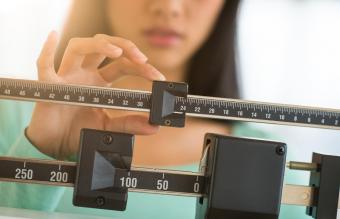
Protein is one of the most important nutrients you can put into your body. It is beneficial in so many ways. Protein helps you feel full and is needed to maintain your muscles, bones, skin, and other organs. Therefore, knowing which foods are rich in protein and how to incorporate it into your diet properly is a must.
1. Know Your Protein Needs
Knowing how much protein you need daily is a must to eat protein properly. The recommended dietary allowance (RDA) for protein is 46 grams for women, 56 grams daily for men, and 71 grams of protein for pregnant and nursing women. Individual protein needs vary, so using your body weight and activity level is a more accurate way to estimate protein requirements. According to a 2014 issue of Today's Dietitian, the following are estimated protein needs based on body weight:
- Protein RDA: 0.4 grams per pound of body weight
- Pregnant and nursing women: 0.5 to 0.6 grams per pound
- Endurance athletes: 0.5 to 0.9 grams per pound
- Strength athletes: 0.6 to 0.9 grams per pound
The maximum safe amount of protein you should eat is 35 percent of your total calorie intake, according to the Institute of Medicine. So, if you're consuming 2,000 calories per day, eat no more than 175 grams of protein daily (protein provides 4 calories per gram).
2. Aim for Three Servings of Dairy
Dairy foods like low-fat milk, yogurt, and cheese are excellent sources of high-quality protein, calcium, and vitamin D. So, it's important to aim for three servings of these foods daily to help meet your body's nutrient needs, suggests the Dietary Guidelines for Americans 2015. Doing so helps prevent osteoporosis, maintains lean muscle mass, and aids in healthy weight management. If you don't eat dairy foods, try calcium-fortified dairy-free products like soymilk, soy yogurt, and protein-fortified almond milk. Sample portion sizes for dairy foods include:
- 1 cup of milk, soy milk, or protein-fortified almond milk
- 1 cup of regular yogurt, Greek yogurt, or soy yogurt
- 1.5 ounces of reduced-fat cheese
- 1/3 cup of reduced-fat shredded cheese
- 2 cups of cottage cheese
3. Try Protein Smoothies
For an on-the-go, between meal snack, pre-workout (or post-workout) energy booster, or meal replacement, try nourishing high-protein smoothies. These smoothies work great for muscle building when used before and after workouts, but they can also help you shed pounds when used as meal replacements. A variety of protein smoothie recipes are available, but the basic ingredients to blend are as follows:
- 1½ cup of milk, protein fortified almond milk, soy milk, or water
- 1 scoop of protein powder
- ½ cup of Greek yogurt (optional)
- ½ cup of fruit or oatmeal (optional)
- 1 tablespoon of nut butter or 2 teaspoons of honey (optional)
- ½ cup of ice
4. Eat Protein at Each Meal

To get your daily dose of protein and reap the benefits of this essential nutrient, choose at least one protein food at each meal. Using the Dietary Guidelines for Americans 2015 as a reference, aim to eat at least the following portions of protein foods daily:
| 1,200 calories (often used for weight loss in women) |
3 ounces |
| 1,400 calories (often used for weight loss in men) |
4 ounces |
| 1,600 to 1,800 calories (sedentary women and moderately active women over 50) |
5 ounces |
| 2,000 calories (sedentary men over age 60 and many moderately active women) |
5.5 ounces |
| 2,200 calories (many moderately active and active women; some sedentary men) |
6 ounces |
| 2,400 to 2,600 calories (active women and moderately active men) |
6.5 ounces |
| 2,800 to 3,200 calories (active men) |
7 ounces |
According to the U.S. Department of Agriculture, examples of foods in the protein group with corresponding 1-ounce portion sizes include the following:
- 1 ounce of meat, chicken, poultry, or fish
- 1 egg
- 2 egg whites
- ¼ cup of cooked legumes
- ¼ cup of tofu
- 2 tablespoons of hummus
- ½ ounce of nuts or seeds
- 1 tablespoon of nut butter
- ½ veggie burger
5. Choose Protein-Rich Snacks
Instead of snacking on junk food, choose protein foods for snacks to boost satiety, aid in healthy weight management, and maintain lean muscle mass. The following protein/carbohydrate combinations will curb your munchies in no time.
- Reduced fat cheese with whole-grain crackers
- Hummus with pita bread or pretzels
- Greek yogurt topped with fruit
- Protein smoothie made with fruit
- Cottage cheese with nuts or fruit
- Pretzels with nuts and dried fruit
- Nut butter on bananas, apples, whole grain bread, or whole-grain crackers
6. Know About Vegetarian Protein
If you follow a vegetarian or vegan diet, it's helpful to know how to eat protein properly when following a meatless meal plan. If you simply eliminate meat, poultry, and seafood from your diet, you can get plenty of high-quality, complete protein from:
- Eggs
- Dairy foods
- Soy
These foods contain all essential amino acids your body requires daily. If you follow a vegan diet, be sure to eat a variety complementary plant-based proteins over the course of the day, or include soy in your meal plan. Examples of complementary protein pairings for vegan dieters include:
- Legumes plus grains (beans with rice, or bean burritos)
- Legumes plus corn (corn tortilla with beans, or cold salad with corn plus peas or beans)
- Legumes plus nuts or seeds (cold salad with peas or beans plus nuts and seeds)
- Grains plus nuts or seeds (peanut butter on whole-grain bread, or oatmeal topped with nuts)
Eating Protein Is Simple
Eating protein properly is as simple as knowing which foods are high in protein, figuring out how much protein you need daily, and munching on a variety of healthy protein-rich foods spaced evenly throughout the day.







